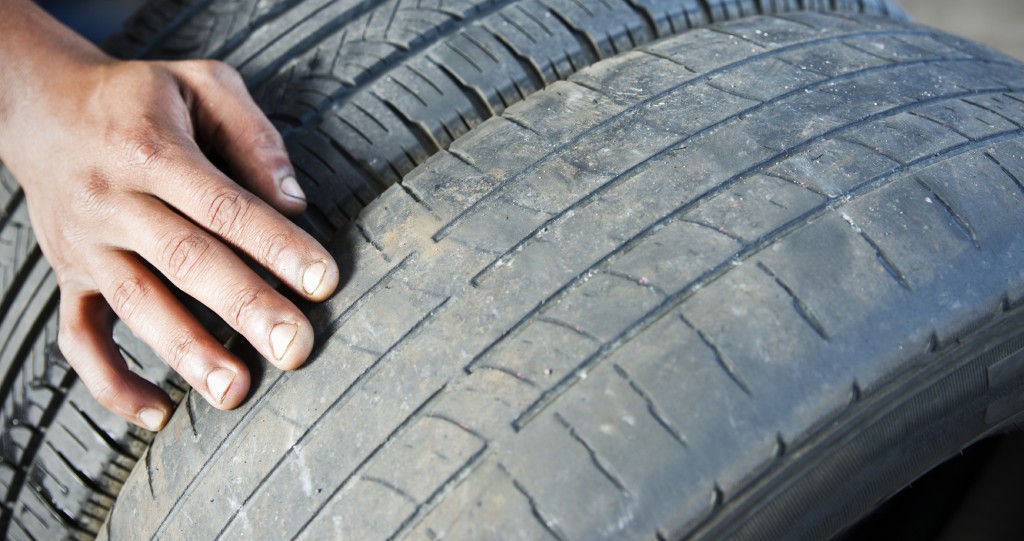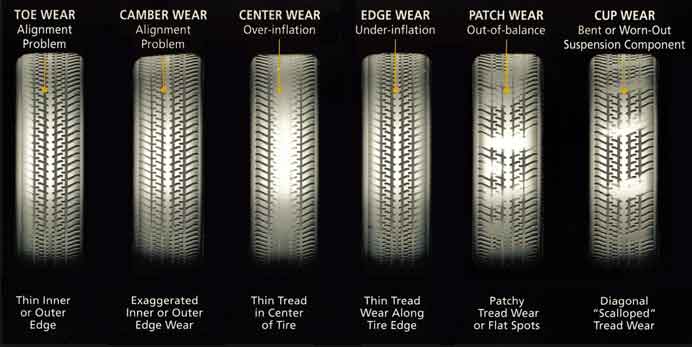
One of the main causes of tire wear on the inside shoulder is due to poor camber angles. Here you deal with a negative camber angle where the bottom part tilts outside more than the top parts.

Most common is the shock absorber.
Tires wearing on the inside edge. It leads to the issue of tires wearing on the inside edge in your vehicle. The shallower the tread the more the risk that you would lose traction while driving in wet or snow. The primary cause of your car tires wearing on the inside includes the inside of the tread on the front tires wearing faster than the center or outside edge.
It is known as the Camber problem. The primary cause of your car tires wearing on the inside includes the inside of the tread on the front tires wearing faster than the center or outside edge. It is known as the Camber problem.
The negative camber is a leading cause of your car tire wearing on the inside. Why do tires wear on the inside edge. The angles causing this type of wear are typically negative toe and camber.
For parts there are three component sources of the inner-edge tread wear. Bushings springs and loads. Ozone extreme temperatures and other atmospheric issues tend to destroy rubber bushings and cause the alignment angles to change.
Why is my front tire wearing on the inside. If your front tires are wearing on the inside it is because the angle at which your tires are sitting has been shifted towards the center of the car. This is called negative camber and happens when the suspension of the vehicle is worn out or when suspension components like control arms and trailing arms loosen.
The tires are wearing off when they contact the road. That being said the part of the tire. Generally inner tire wear is caused by negative camber which is an indicator of a bad alignment or shot joints as was my case with my pickup truck.
If the edge is roughfeathered then that is an indicator of scrubbing caused by toe being out of whack. Tire Tread Wear Patterns. Underinflated tires wear on the shoulders or outside edges.
There is excessive contact with the outer edges of the tire and the road surface as the vehicle travels down the road. Overinflated tires wear in the center. There is excessive contact with the center of the tire and the road surface.
It looks as if the tire is only in contact with the road along that inside edge - the rest of the tread looks hardly worn at all. From your post you dont drive very high mileage but it seems remarkable that you havent noticed any handling problems - eg. The car is wandering from a straight line or it veers off to one side when the steering wheel is in its central position.
Inner-edge tire tread wear is the most common tread wear problem most technicians see. The angles causing this type of wear are typically negative toe and camber. For parts there are three component sources of the inner-edge tread wear.
Bushings springs and loads. One of the main causes of tire wear on the inside shoulder is due to poor camber angles. Here you deal with a negative camber angle where the bottom part tilts outside more than the top parts.
Too much of the negative camber tilt will put much stress on the inner edge of the tire. It may start with slight feathering before it goes overboard. Poor wheel alignment is another culprit when it comes to tire wear on the inside.
Inner edge wear on tires is the most common problem most technicians see. The angles causing this type of wear are typically negative toe and camber. For parts there are three component sources of the inner edge wear.
Bushings springs and loads. Here I just wanted to share an Opinion with you guys since I have seen this many times before. One Side or One Shoulder Wear.
If only the outer edge or the inner edge of the tire has visible signs of wear they call this a one-sided wear. If the wear is on the outer edge of the tire it is often brought about by positive camber toe and caster. The most common cause of inner tire wear is that wheel alignment is out.
Your camber might be set negatively causing the insides of your tires to make more contact with the road than the middle and outside. Inner tire wear can also develop from worn ball joints. Lets take a closer look at these most common causes of inner tire wear.
If the inside edge of the tire is not only wearing but also cupping also called feathering. Then worn suspension parts may be the cause. Most common is the shock absorber.
My opinion is with an entry level vehicle Ford did not spend too much on the rear shocks. Consequentially front tires will wear on outside edge or the inside one depending on the change. Usually the top of the strut or the camber bolt on the bottom of it is moved or rotated to achieve optimal camber.
When the part bends and the setting misaligns the best fix is to replace it. All vehicles are susceptible to tire wear and tear from everyday driving but high-performance cars and vehicles that tow heavier loads have a higher risk of tires wearing on the inside. A 4-wheel car alignment in Fairfax Station VA is recommended to equalize the camber so all four tires are parallel to one another and flat against the road surface.
BMWEuro Tire wear inside edge. Why you MUST check your tyres completely. If playback doesnt begin shortly try restarting your device.
Videos you watch may be added to the TVs watch history and. Rear tyres inner edge wear camber seting. Start date Jul 12 2012.
Joined Jul 12 2012 Messages 2 Reaction score 0 Points 0. Jul 12 2012 1 Hi all This is my first post so pleas sorry if will be understandable. Tire wear inside BADLY.
Tire wear inside BADLY. Overloading or weak structure will cause the insides to wear out. Run a long straight edge across the axle with the boat on it and see if there is a bow.
Repeat with the boat off the trailer and compare. Heeltoe wear typically occurs in a shoulder rib and is often caused by excessive positive or negative toe. Feather edge tire wear.
Tires are feathered when the tread ribs are worn lowersmoother on one side and highersharper on the other. This is often caused by a combination of improper alignment settings such as excessive toe and caster.